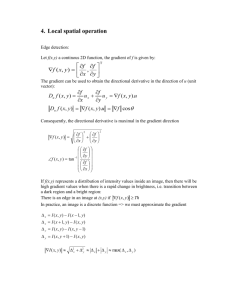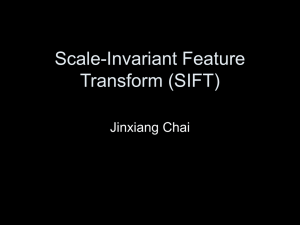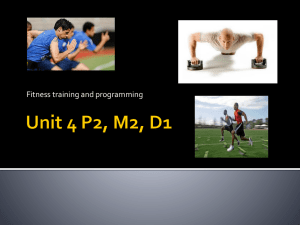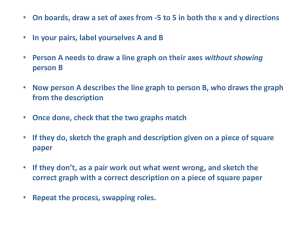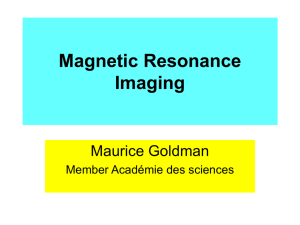Scale Invariant Feature Transform
advertisement
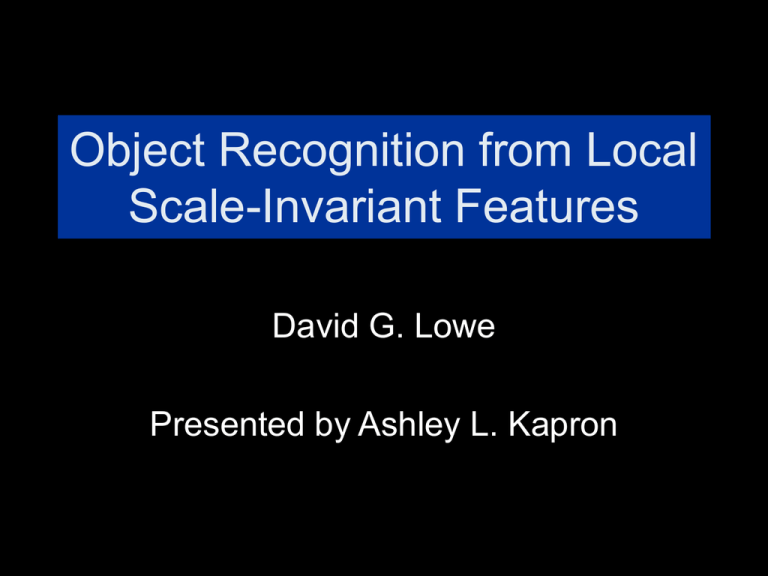
Object Recognition from Local Scale-Invariant Features David G. Lowe Presented by Ashley L. Kapron Introduction • Object Recognition – Recognize known objects in unknown configurations Previous Work • Zhang et al – Harris Corner Detection – Detect peaks in local image variation • Schmid and Mohr – Harris Corner Detection – Local image descriptor at each interest pt from an orientationinvariant vector of derivative-ofGaussian image measurements Motivation • Limitations of previous work: – Examine image only on a single scale • Current paper addresses this concern by identifying stable key locations in scale space • Identify features that are invariant Invariance • • • • Illumination Scale Rotation Affine Scale Space • Different scales are appropriate for describing different objects in the image, and we may not know the correct scale/size ahead of time. Difference of Gaussian 1. A = Convolve image with vertical and horizontal 1D Gaussians, σ=sqrt(2) 2. B = Convolve A with vertical and horizontal 1D Gaussians, σ=sqrt(2) 3. DOG (Difference of Gaussian) = A – B 4. Downsample B with bilinear interpolation with pixel spacing of 1.5 (linear combination of 4 adjacent pixels) Difference of Gaussian Pyramid Blur A3-B3 B3 DOG3 A3 Downsample A2-B2 B2 Blur DOG2 A2 Input Image Downsample A1-B1 Blur B1 DOG1 Blur A1 Pyramid Example A3 A2 A1 DOG3 B3 B2 DOG3 B1 DOG1 Feature detection • Find maxima and minima of scale space • For each point on a DOG level: – Compare to 8 neighbors at same level – If max/min, identify corresponding point at pyramid level below – Determine if the corresponding point is max/min of its 8 neighbors – If so, repeat at pyramid level above • Repeat for each DOG level • Those that remain are key points Identifying Max/Min DOG L+1 DOG L DOG L-1 Refining Key List: Illumination • For all levels, use the “A” smoothed image to compute – Gradient Magnitude • Threshold gradient magnitudes: – Remove all key points with MIJ less than 0.1 times the max gradient value • Motivation: Low contrast is generally less reliable than high for feature points Assigning Canonical Orientation • For each remaining key point: – Choose surrounding N x N window at DOG level it was detected DOG image Assigning Canonical Orientation • For all levels, use the “A” smoothed image to compute – Gradient Orientation + Gaussian Smoothed Image Gradient Orientation Gradient Magnitude Assigning Canonical Orientation • Gradient magnitude weighted by 2D gaussian = * Gradient Magnitude 2D Gaussian Weighted Magnitude Assigning Canonical Orientation Weighted Magnitude Gradient Orientation Sum of Weighted Magnitudes • Accumulate in histogram based on orientation • Histogram has 36 bins with 10° increments Gradient Orientation Assigning Canonical Orientation Weighted Magnitude Gradient Orientation Sum of Weighted Magnitudes • Identify peak and assign orientation and sum of magnitude to key point Peak Gradient Orientation Refining Key List: Rotation • The user may choose a threshold to exclude key points based on their assigned sum of magnitudes. Example of Refinement Max/mins from DOG pyramid Filter for illumination Filter for edge orientation Local Image Description • SIFT keys each assigned: – Location – Scale (analogous to level it was detected) – Orientation (assigned in previous canonical orientation steps) • Now: Describe local image region invariant to the above transformations SIFT key example Local Image Description For each key point: • Identify 8x8 neighborhood (from DOG level it was detected) • Align orientation to xaxis Local Image Description 3. Calculate gradient magnitude and orientation map 4. Weight by Gaussian Local Image Description 5. Calculate histogram of each 4x4 region. 8 bins for gradient orientation. Tally weighted gradient magnitude. Local Image Description 6. This histogram array is the image descriptor. (Example here is vector, length 8*4=32. Best suggestion: 128 vector for 16x16 neighborhood) Database Creation • Index all key points of reference model image(s) – Store key point descriptor vectors in database Image Matching • Find all key points identified in target image – Each key point will have 2d location, scale and orientation, as well as invariant descriptor vector • For each key point, find similar descriptor vectors in reference image database. – Descriptor vector may match more than one reference image database – The key point “votes” for image(s) • Use best-bin-first algorithm Hough Transform Clustering • Create 4D Hough Transform (HT) Space for each reference image 1. 2. 3. 4. • Orientation bin = 30° bin Scale bin = 2 X location bin = 0.25*ref image width Y location bin = 0.25*ref image height If key point “votes” for reference image, tally its vote in 4D HT Space. – This gives estimate of location and pose – Keep list of which key points vote for a bin Verification • Identify bins with largest votes (must have at least 3). • Using list of key points which voted for a cell, compute affine transformation parameters (m, t) – Use corresponding coordinates of reference model (x,y) and target image (u,v). Verification • If more than three points, solve in leastsquares sense Verification: Remove Outliers • After applying affine transformation to key points, determine difference between calculated location and actual target image location • Throw out if: – Orientation different by 15° – Scale off by sqrt(2) – X,Y location by 0.2*model size • Repeat least-squares solution until no points are thrown out SIFT Example SIFT Example SIFT example Advantages of SIFT • Numerous keys can be generated for even small objects • Partial occlusion/image clutter ok because dozens of SIFT keys may be associated with an object, but only need to find 3 • Object models can undergo limited affine projection. – Planar shapes can be recognized at 60 degree rotation away from camera. • Individual features can be matched to a large database of objects Limitations of SIFT • Fully affine tranformations require additional steps • Many parameters “engineered” for specific application. May need to be evaluated on case-to-case basis Thank you!
